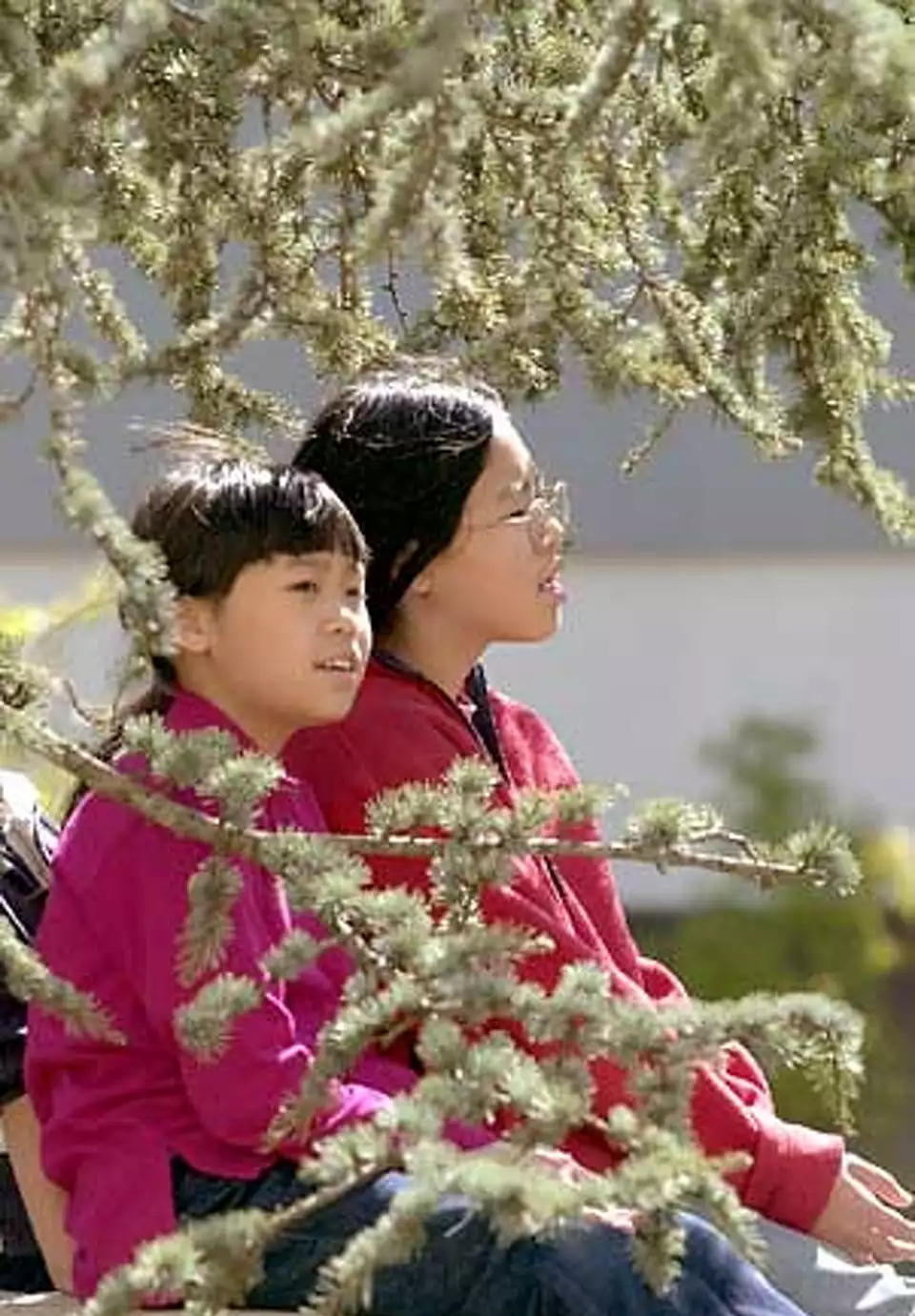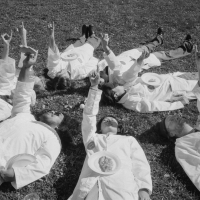S.F. State honors internees from World War II
Sixty years after they were forced off campus and moved into wartime internment camps, Helen Hori and Kaya Sugiyama returned to San Francisco State University yesterday — as treasured guests.
The university unveiled a new memorial and waterfall garden to honor the experience of the more than 120,000 Japanese Americans held in internment camps during World War II.
The memorial pays special tribute to Hori and Sugiyama, and 17 other San Francisco State students forced to leave.
"It's very special," said Hori, 83, who was Helen Nitta before she married. "Most of us like to have the public know what happened."
The memorial, tucked away in a quiet courtyard, tells their story with stone and water.
Ten large boulders sit on a grassy lawn, representing each of 10 internment camps set up during the war in California, Arizona, Idaho, Utah, Wyoming, Colorado and Arkansas. A waterfall, surrounded by boulders and a flowering garden, symbolizes the internees' freedom and return after the war.
A bronze plaque includes a map of the 10 internment camps, a list of the 19 San Francisco State students who were forced to withdraw and copies of the executive order allowing the confinement of Japanese Americans signed by President Franklin Roosevelt.
The memorial was financed by a $125,000 grant from the California Civil Liberties Public Education Program.
Ruth Asawa, a San Francisco artist and former internee, designed the memorial and garden as a way of informing future generations of students who may know little about the internment camps.

Dedication of a memorial garden at San Francisco State honoring Japanese American students that were interned during World War 2. Photo by: John Storey.

Amanda Lee (right), 11, and her sister Clarissa Lee, 9, watch the dedication ceremony from the garden. Photo by: John Storey.
"I thought it would be nice if we could do something that told the story, but not in a bitter way and not just as a Japanese story," said Asawa, who was 16 when she was ordered into an internment camp in Rowher, Ark. "This is a story about liberty and freedom."
Sugiyama, 80, recalled the "cruel" way her family's life was interrupted. She was a 20-year-old music major when she was forced to drop out of college.
Her parents left their home in San Francisco, and the family initially was moved into a horse stall at Tanforan Race Track in South San Francisco. The stall had been used by the legendary "Sea Biscuit."
"You just don't have time to think," she said. "We just had to leave."
While her parents and younger siblings were later moved to the camp in Topaz, Utah, Sugiyama and her brother went to the University of Colorado. It was the only college west of the Mississippi, she said, that would accept Japanese American students.
Still, Sugiyama said, she was extremely lucky her father, a doctor, could afford to pay Colorado's tuition. Most of her peers had to postpone college. And some never went back.
In Colorado, Sugiyama and her brother were kept under government surveillance for six months. Eventually, she was hired as a part-time conversational Japanese teacher for military personnel.
After the war, she returned to California. Here, she said, she still encountered insults, including on the job as a child care worker.
"Kids would say they wouldn't take crap from Japs," she recalled. "I just rebelled. I would tell them all to go to hell."
Hori, a college junior and education major in 1942, had tried to stay in classes as long as she could.
When she was finally forced to leave in May, she needed a special permit to travel to her parents' farm in Placer County.
They all were sent to the camp at Tule Lake near the California-Oregon border. Like Sugiyama, she also taught conversational Japanese. Later, she moved to Indianapolis, but could find work only as a secretary because she hadn't finished school.
Years later, after she had married, Hori did return to San Francisco State, where she received her teaching degree. She became one of the first Japanese American teachers in the San Francisco city schools, and finally retired in 1985.
In 1998, San Francisco State granted honorary degrees at a special graduation ceremony to the 19 Japanese American students who had been forced to leave.
Aiko Nishi, who had been a 19-year-old education student when she was interned, was thrilled to be honored then, said her daughter, Vivian Nelson.
Nelson attended yesterday's ceremony on behalf of her mother, who died last year.
Afterward, tears filled her eyes as she pointed to her mother's name on the memorial plaque.
"I wish she could have been here to see this," she said. "It's just nice to see that your mom is remembered."
Tags

